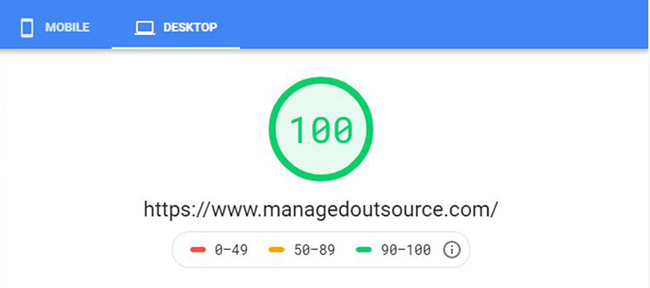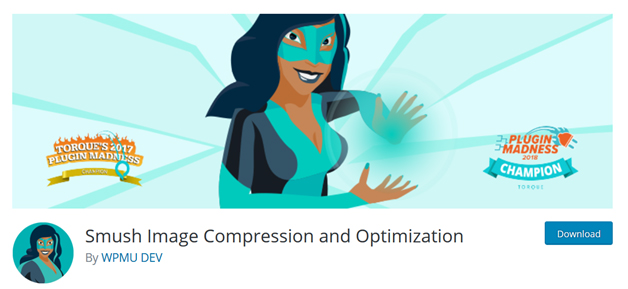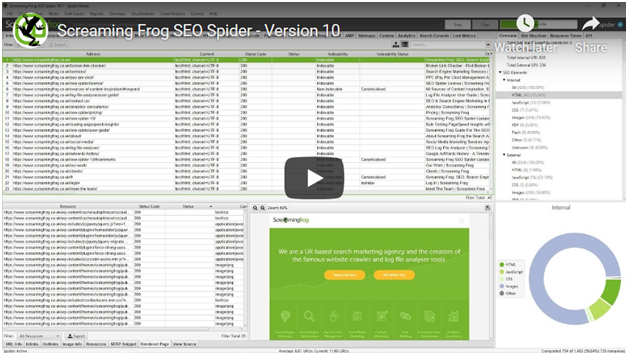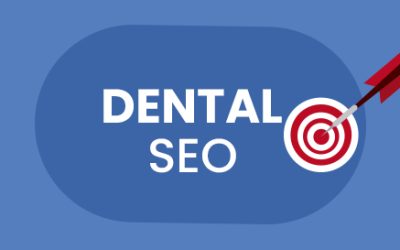Website speed matters a lot. If your website isn’t as fast as you need it to be, then you actually wasted your time spending days and even weeks struggling over its design in production with countless hours of edits. Speed is a critical factor when it comes to ranking your website higher on Google’s search engine results and especially when it comes to building a conversion rate and search engine optimized website. So, it’s very important to diagnose the reason behind your website slowing down and fix the issues quickly to improve your site’s organic performance. You can also rely on a reliable and experienced SEO company in Long Island, NY for website speed optimization.
Google released the PageRank algorithm in 2010, which made website and page speed a high ranking factor for crawlers to assess and rank websites in search engine results pages. But from 2016, the speed at which mobile pages load has been a major factor in their mobile search rankings. In this digital era where you are provided with fast connectivity, all of us look for instant result display. We want what we’re searching for to appear instantly and if it takes a long time we get frustrated, and may leave the page.

The average load time for most sites is over eight seconds and can even exceed 11 seconds in the tech industry. But then, the best-practice benchmark is under 3 seconds. According to an article in HostGator,
- 53% of mobile users will leave a website that takes longer than 3 seconds to load
- Nearly 10% of web users will bounce after 2 seconds
And according to The Daily egg article, a one-second delay in page load time yields: 11% fewer page views, 16% decrease in customer satisfaction and 7% loss in conversions. This means a few extra seconds could have a huge impact on your ability to engage visitors and make sales, which results in a good ranking with Google and will also keep your bottom-line profits high. Other benefits that you could enjoy if you improve your page load speed are:
- Improved user experience: Speed up a website to improve user experience. Even if you make a great effort to engage visitors through your content and graphics, if your website takes a long time to load then it’s going to have a negative impact.
Throughout the digital years, a distinct correlation has become evident between page speed and visitor retention and bounce rate. And with visitor retention becoming increasingly important in terms of meeting revenue goals and other annual targets, page speed is one of the most important focus areas for customer experience today (searchenginewatch.com).
Users need a fast response to freely navigate and explore the content and their attention would collapse at loading times beyond the 10 seconds. For example, Amazon reported seeing decrease in sales by as much as 1% for every 100ms slower the page loaded (www.wpexplorer.com).
Google reports that
- A 1-second delay in load time will decrease visitors’ satisfaction by 16%
- 79% of those visitors would not buy your product or service if they are not satisfied by your overall website performance
- Slow and bloated websites are related to lack of efficiency and fail to gain visitors’ trust when it comes to sharing personal and billing information.
- Achieve goals with better marketing performance: A speedy website greatly contributes to achieving your marketing goals such as improving your overall conversion rate, reducing bounce rate, or improving the service for your customers. According to an article in Boostability,
- 51% of U.S. online shoppers will not complete a purchase if a website is too slow
- 47% of users expect your web page to load in under 2 seconds
- And at peak traffic times, 75% of online customers opt for a competitor’s site instead of waiting.
However, if you improve a page’s load time by just one second, this can result in an improvement in the conversion rate between 10 – 20%, says Google studies.
- Enhanced SERP positioning: According to the Google PageRank algorithm, if your website has to be found on the internet, it has to achieve good scores. This takes into account page load time and overall website speed, among other measures such as page views. So a focus on page speed is vital if you want to rank in the SERPs.
However, it’s not an easy task to speed up your website as it’s often hard to diagnose what is causing your website to run slower than it should. As a first step, diagnose the speed of your website and for that perform page speed tests. Looking at it from Google’s perspective, if your pages take an age to load, the search engine will not be able to crawl as many pages, which results in Google using its crawl budget ineffectively, potentially negatively impacting your site’s organic performance.
Page load time can be improved through a variety of different methods that will allow you to quickly see the true potential of your business website. Some of them are:
- Take out unnecessary plug-ins and add-ons: Additional website functionality with plug-ins comes at a price: performance degradation, that is, having unnecessary plug-ins and add-ons can reduce your website speed a lot. You have to pay extra attention to this issue, especially if you use blogging CMSs like WordPress, Joomla or Drupal.
To benefit from avoiding manual coding and to add attractiveness to the website, webmasters install a myriad of plug-ins but often unnecessary features such as Gravatar, profile tools, website stats and font tools – some even use 10 different plug-ins for social media integration. The number of plug-ins is not entirely a concern if they are developed well to avoid complex actions and expensive server processing. So to increase your page speed, avoid plug-ins that
- Load a lot of scripts and styles
- Perform lots of remote requests
- Add extra database queries to every page on your website
If you’re a WordPress user, install the P3 (Plugin Performance Profiler), which will help you to scan all of your WordPress plug-ins to find the blocks, and it’ll give you a report so that you can see how each plug-in affects your website performance.
- Optimize Caches: Avoid unnecessary server requests by ensuring that your mobile browser uses local memory to cache resources in order. Optimizing caches improve page load time a lot.
- Compress images: Large images are the biggest reason for slow page loading. To fix this issue, compression is the top optimization technique that can be used. According to Neil Patel, we can save an average of 50% or more on image size by using simple compression tools.
For a WordPress user, WP Smush Image Compression and Optimization plug-in is a great way to fix this issue.
If you have to compress files, then use Gzip, as it’s a highly recommended tool to reduce the size of HTML or CSS files among others, reducing overall HTTP response time. However, do not use Gzip on image files, as this may affect image quality.
- Reduce redirects: Even though redirects are necessary especially when you move and delete pages and are the best way to eliminate issues with broken links, having too many of them can create additional HTTP requests, which can negatively impact speed, particularly on mobile devices.
To identify all of unnecessary redirects on your site, you can use any SEO spider tool or crawler software such as Screaming Frog, Spotibo, Xenu’s Link Sleuth, Scrutiny and many more.
- Minimize JavaScript & style sheets: Carry out minification, the process of removing all needless characters from source code without changing its functionality to speed up your website. The same process is applicable to mobile sites also, as it helps to reduce the overall bandwidth consumption and improve mobile caching.
- Use Content Delivery Network (CDN): To improve average page load time you may use a Content Delivery Network (CDN). This is a system of distributed servers that deliver web pages and other web content to a user based on the geographic locations of the user. Another benefit of CDN is that they consist of multiple networks, which each make a copy of the website, stored into multiple geographical data centers and then provide users with quicker and more consistent access to your site.
For example, use of a CDN such as Amazon Cloudfront, can reduce the page load time. The access to a faster server near your user’s geographical location ensures faster loading time for your mobile site (https://www.truconversion.com).
- Improve server response time: When reviewing your server response time, you should aim approximately for a time under 200ms by reviewing different performance metrics and looking out for things like slow routing, lack of memory or slow database requests.
- Reduce wasted white spaces: White space, line returns or even comment tags can build up and increase your page size by 10 – 20%, which might negatively impact your page load time. So, review your pages and examine each line of code to make the suitable change required to maximize performance.
When you’ve spent countless days, weeks, and months building a new website, it has to be top-notch. To achieve that quality, website speed optimization will always play a big role. It should be one of your main priorities when trying to perfect and optimize your site. People expect websites to be lightning fast and if you fail to deliver on their expectations, you will risk losing a lot of website traffic and, ultimately, your loyal followers or your revenue. An experienced firm that provides website marketing services in Long Island, NY would be knowledgeable in applying different strategies to speed up your website and increase your revenue.






